From Queen Victoria to Princess Diana to the Duchess of Cambridge, royal wedding dresses have set fashion styles for nearly 200 years—everything from the color of the gown itself to flowers.
Several examples of royal attire as portrayed in movies are included in our exhibition, Fashionable Romance: Wedding Gowns in Film, including Queen Elizabeth’s 1923 gown and Wallis Simpson’s famous 1937 dress. Let’s take a look at the famous royals whose gowns have left their mark on the fashion scene.
FEBRUARY 10, 1840
Queen Victoria marries Prince Albert at the Chapel Royal, St. James’ Palace in London.
In the mid-1800s, white was the color of mourning; red was a more popular color for weddings, which made it remarkable when Britain’s young queen wore a white dress for her ceremony. Details of Queen Victoria’s bridal ensemble were publicized in newspapers and in souvenirs, widely reinforcing the idea that wedding gowns—particularly for European and American brides—should be white.
Victoria’s silk satin court dress was embellished with British lace, establishing the tradition of supporting local manufacturers that royal British brides still follow. Instead of a crown, she wore a wreath of artificial orange blossoms with her lace veil, which also set the standard for generations of brides to come. See a painting of Queen Victoria in her wedding dress from the Royal Collection Trust.
APRIL 26, 1923
Albert, Duke of York (later George VI) marries Lady Elizabeth Bowes-Lyon at Westminster Abbey in London.
Best known today as the Queen Mother who died in 2002 at the age of 102, Lady Elizabeth’s wedding gown and veil were very much in the style of the 1920s; Vogue magazine described her gown as ivory chiffon moiré with bands of silver lame embroidered with seed pearls suggesting an Italian medieval robe. The way she wore her veil—combined with a wreath in a capped fashion—was on trend for the decade, which can also be seen in Cornelia Vanderbilt Cecil’s 1924 wedding photographs. See the Duchess of York’s official wedding portrait from the Royal Collection Trust.
Lady Elizabeth’s wedding also started three traditions for British royal brides:
- On her way to the altar at Westminster Abbey, she left her bouquet of white roses and heather at the grave of the Unknown Warrior in memory of her brother, who was killed in World War I. Though her gesture was spontaneous, each royal bride since has left her bouquet at the tomb after the ceremony to honor the fallen.
- Her wedding ring was made of Welsh gold—cherished due to its scarcity—given to the couple by the people of Wales; this tradition has continued through three generations.
- Prior to Elizabeth and Albert’s 1923 wedding, royal ceremonies were private. Their wedding, however, was filmed in detail and shown in newsreels around the world, starting a fashion for royal wedding media coverage that continues today.
JUNE 3, 1937
The Duke of Windsor marries Wallis Simpson at the Château de Candé, Monts, France.
American socialite Wallis Simpson created the craze for her signature color “Wallis blue” when she married the former Edward VIII, who gave up the throne for his love. The nipped-at-the-waist dress and jacket created by Mainbocher reportedly was colored to match her eyes, and the ensemble showcased the designer’s incredible attention to detail; even the matching gloves created from the same blue silk crepe were specifically designed to accommodate her wedding ring. The Duchess of Windsor, known for fabulous jewelry and designer clothing, later donated her wedding dress and jacket to the Metropolitan Museum of Art. Unfortunately, the dye has faded over time, causing the dress to lose its famous “Wallis blue” color.
NOVEMBER 20, 1947
Princess Elizabeth marries Lieutenant Philip Mountbatten at Westminster Abbey in London.
British couturier Norman Hartnell was selected for the prestigious commission of designing the wedding dress for the future Queen. Post-World War II shortages meant Princess Elizabeth had to purchase material for her gown using ration coupons.
Hartnell’s design blended formality and youth in a satin dress and 15-foot circular court train. The skirt was embroidered with traditional floral motifs and decorated with crystals and 10,000 seed pearls imported from the U.S. See the official wedding portrait from the Royal Collection Trust.
Elizabeth’s wedding dress has been seen as inspiration for both Grace Kelly’s gown worn at her 1956 marriage to Prince Albert of Monaco as well as Catherine Middleton’s gown worn at her 2011 marriage to Prince William.
APRIL 18, 1956
Prince Rainier III marries Grace Kelly in Monaco.
As befitting her position as one of Hollywood’s leading ladies before becoming Her Serene Highness Princess Grace of Monaco, Grace Kelly’s extravagant wedding gown was designed by Helen Rose, costume designer for Metro-Goldwyn-Mayer and sewn by the MGM wardrobe department in California.
The wedding itself was one of the first big royal media events. Prince Rainier gave MGM permission to film the ceremony, which was reportedly watched by 30 million worldwide at a time when many homes did not even have a television. More than 1,500 reporters arrived to cover the wedding—more than covered all of World War II—overwhelming the principality’s population of 23,000. Prince Rainier had to call in the French riot police to maintain order.
Grace’s dress for the religious ceremony is considered one of the most elegant bridal gowns in the past century. It was handmade from 125-year-old Brussels rose point lace, silk taffeta, peau de soie, tulle, and seed pearls; its high neck, lace fitted bodice, and pleated waist were major influences on bridal designs of the era. Three petticoats gave the bell-shaped billowing skirt its distinctive look. Her tulle veil measured 90 yards, and was attached to a Juliet cap adorned with seed pearls and orange blossoms.
Princess Grace donated her gown to the Philadelphia Museum of Art in 1956, where it was displayed during a 2006 exhibition. Elements from the dress are thought to be inspiration for Catherine Middleton’s bridal gown worn at her 2011 marriage to Prince William as well as for numerous fashion designers, including the Marchesa 2015 spring bridal collection.
JULY 29, 1981
Prince Charles marries Lady Diana Spencer at St. Paul’s Cathedral in London.
No question—when you think of iconic wedding dresses of the past century, the future Princess of Wales immediately comes to mind. Her gown successfully transformed the young Lady Diana Spencer into a fairytale princess.
Lady Diana’s dress was designed by David and Elizabeth Emanuel, who wanted to make the most of the royal wedding’s worldwide spotlight; estimates put the television audience at 500 million viewers. Their creation featured a full skirt and sleeves of ivory silk taffeta, with a double-ruffled collar of pearl-encrusted lace over taffeta. But the centerpiece was the longest train in royal history—25 feet of British silk taffeta, tulle, and netting edged with beaded lace. Diana’s romantic appearance inspired wedding dresses for nearly a decade until taste shifted to slimmer silhouettes.
APRIL 29, 2011
Prince William marries Catherine Middleton at Westminster Abbey in London.
The dress that the future Duchess of Cambridge wore at her wedding to Prince William in 2011 remains a favorite with brides. According to published reports, Kate Middleton expressed her desire to combine modernity with tradition in her gown, designed by British designer Sarah Burton for Alexander McQueen.
The result was an exquisite ivory and white satin ballgown dress featuring a fitted waist, long lace sleeves, and floral motifs adorned with hand-appliqued British and French lace. The flowing skirt had soft pleats and a nine-foot train. Topping her ivory silk tulle fingertip veil—also embroidered by the Royal School of Needlework—was a Cartier “halo” diamond tiara lent to Kate by her future grandmother-in-law, Queen Elizabeth II. The entire wedding ensemble was exhibited at Buckingham Palace a few months after the wedding.
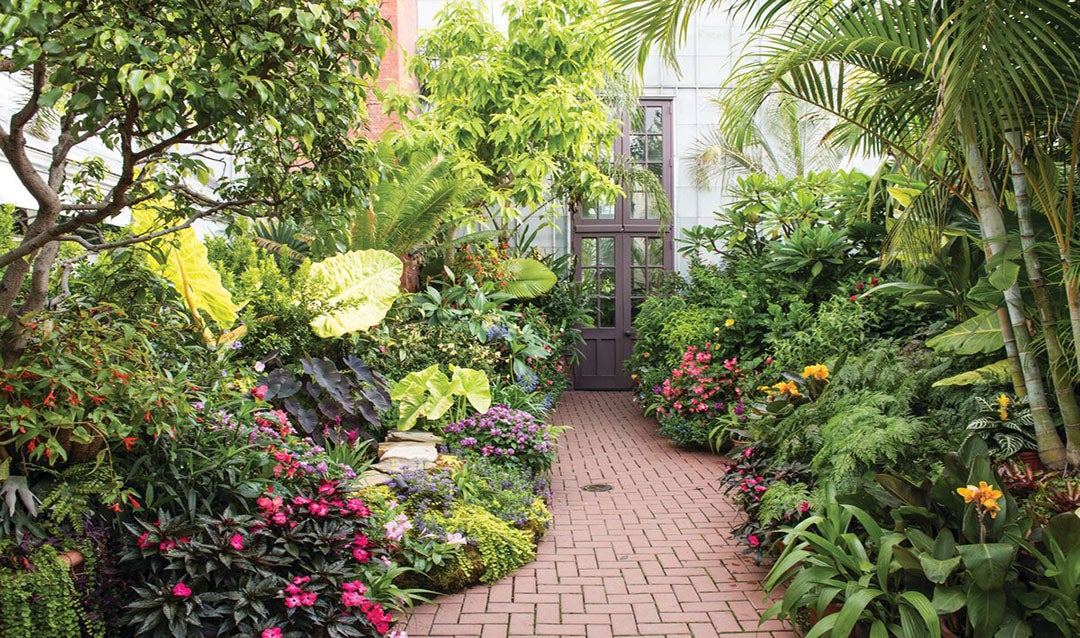
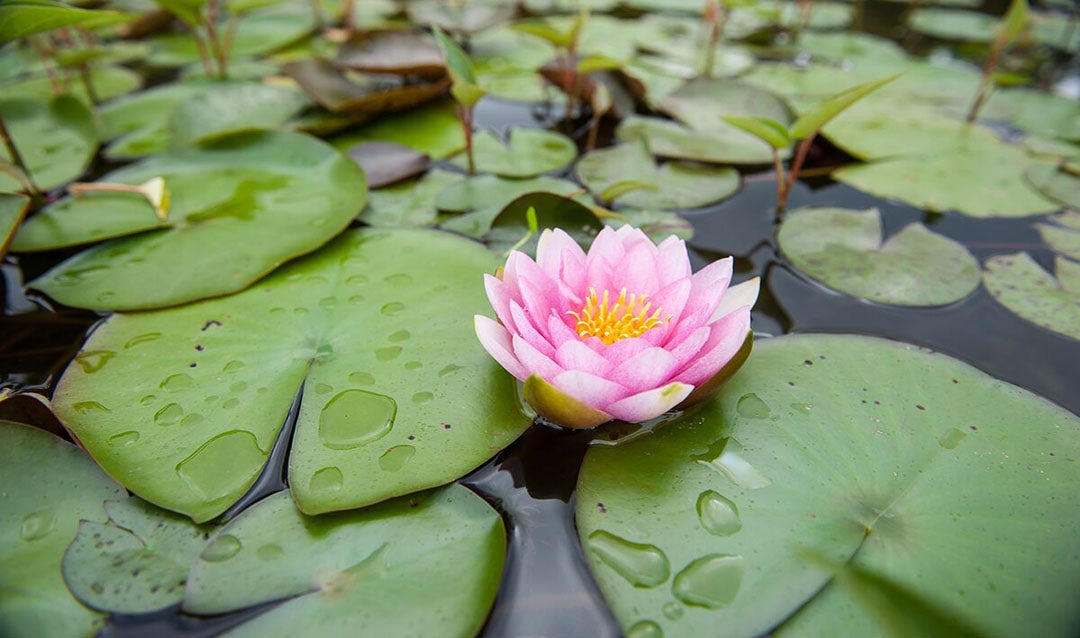
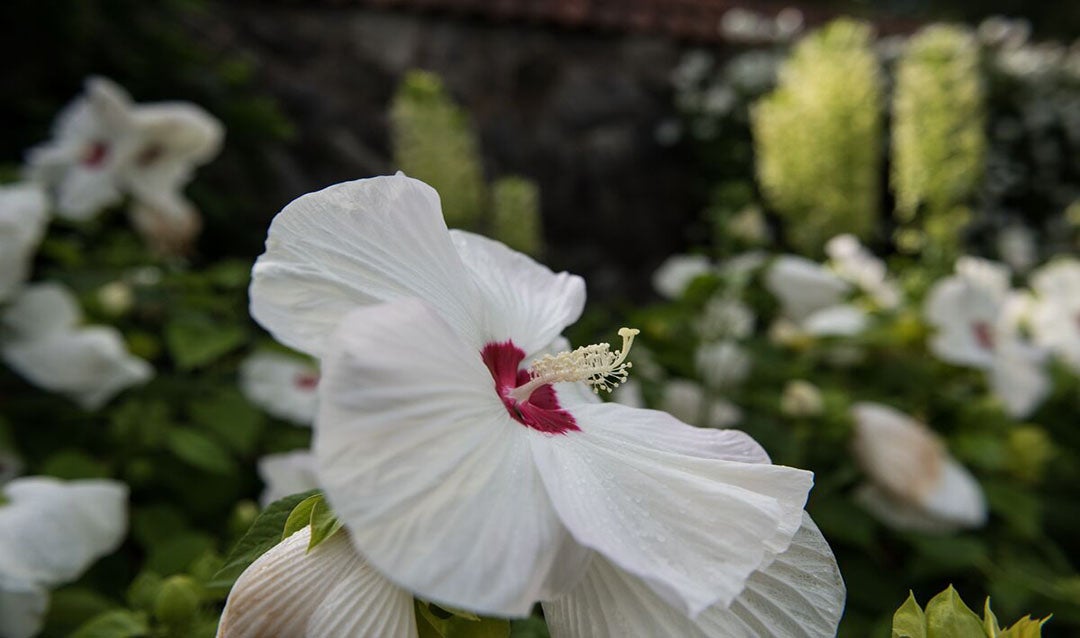
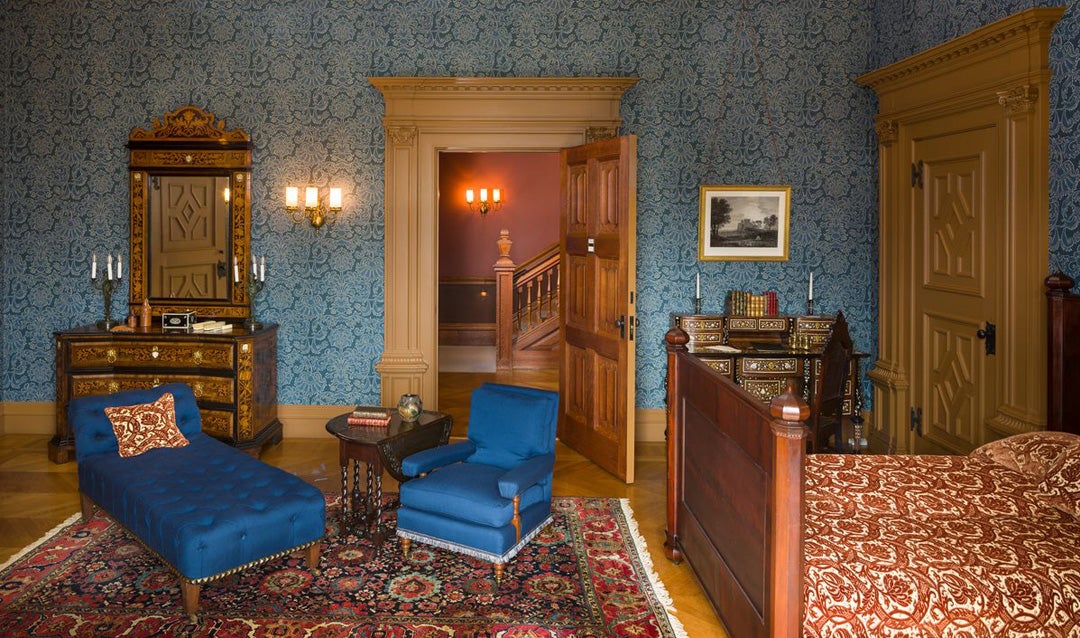
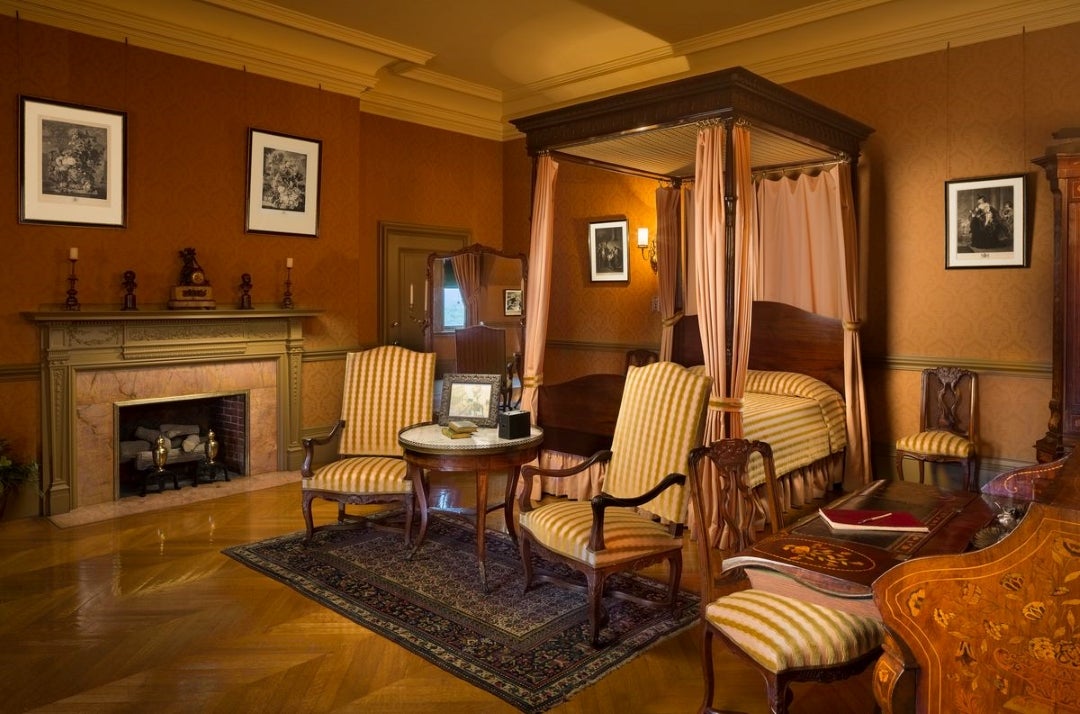
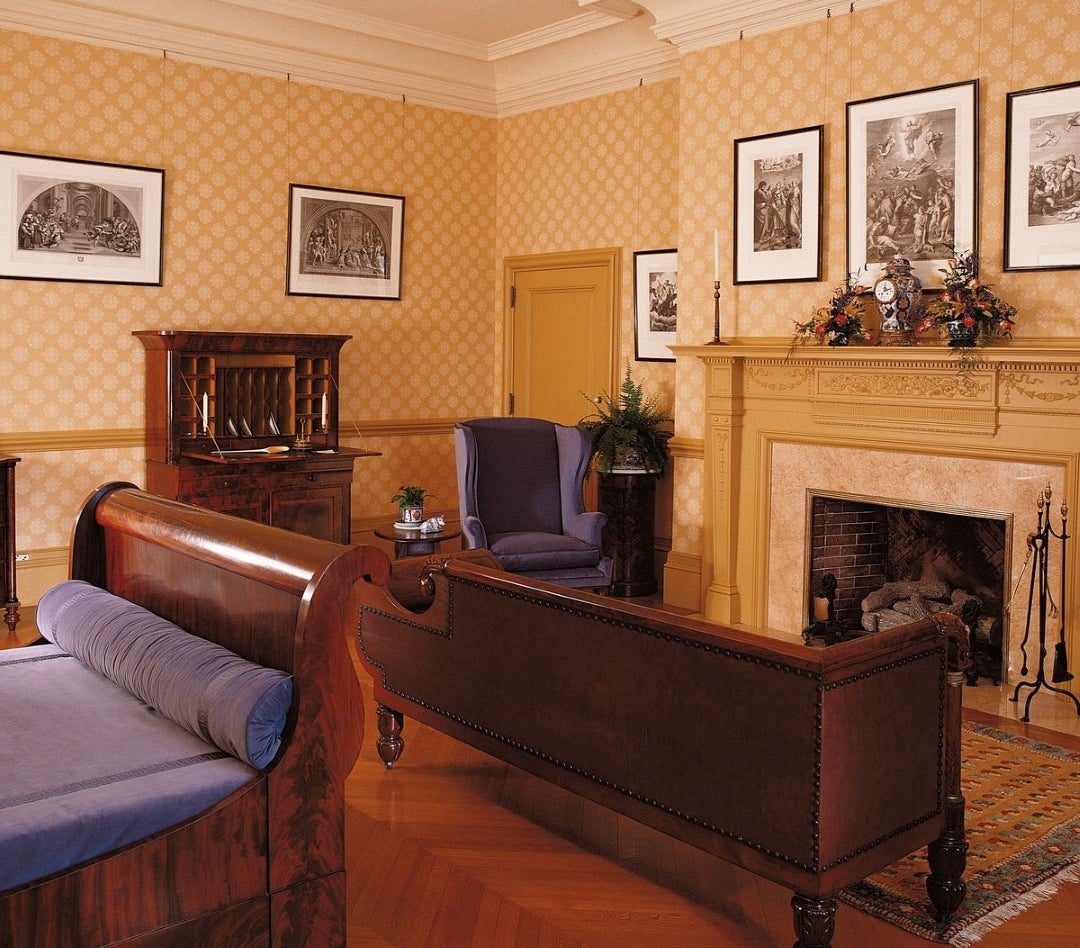
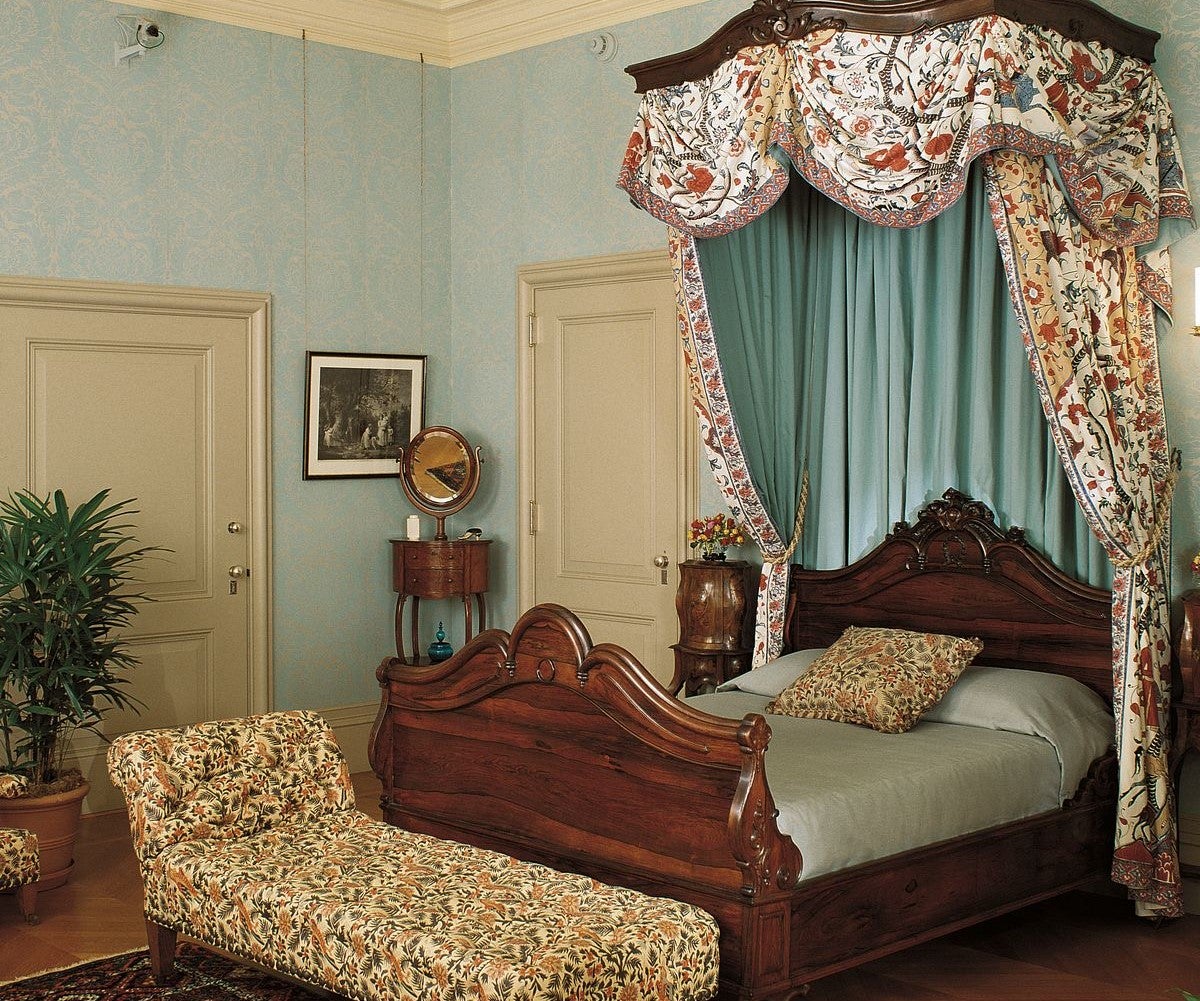
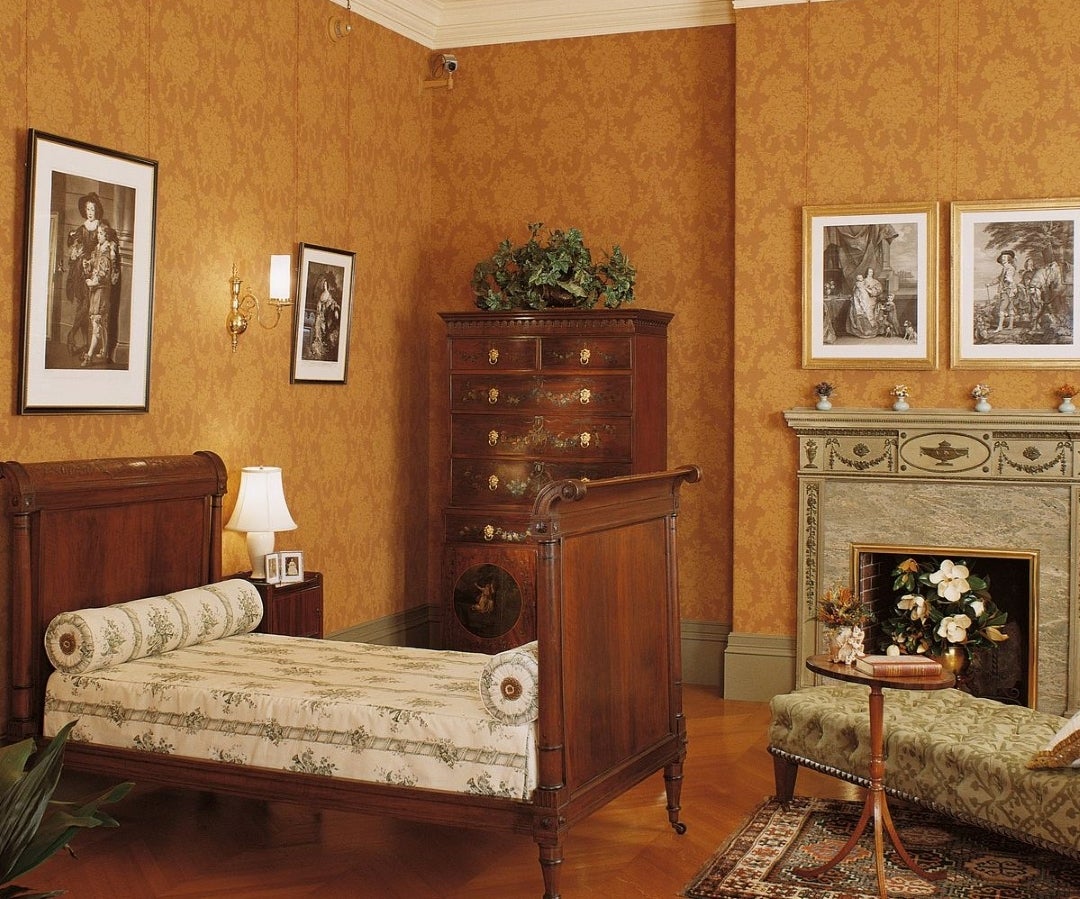
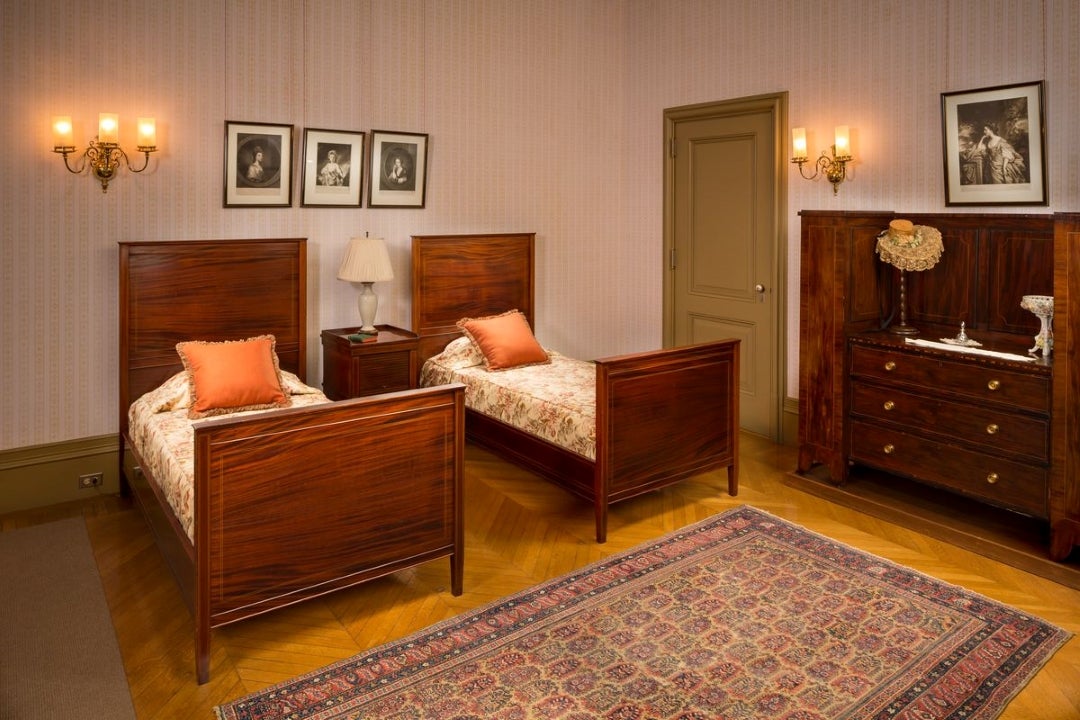




 To illustrate the idea of sun-kissed gardens and rebirth, Jill works closely with Biltmore's
To illustrate the idea of sun-kissed gardens and rebirth, Jill works closely with Biltmore's  This year's seasonal release label features
This year's seasonal release label features  After Jill approved the label design, Lisa worked with specialty printers to ensure that the colors and detail of the artwork would be preserved in the printing process.
After Jill approved the label design, Lisa worked with specialty printers to ensure that the colors and detail of the artwork would be preserved in the printing process.  T
T Although we have few archival notes on the origin of the surround or its installation at Biltmore, the delicate blue and white tiles are late 19th century jasperware, which is a type of colored stoneware to which a relief decoration—usually white—is applied. The surround in the Breakfast Room is after the style of legendary British potter Josiah Wedgwood.
Although we have few archival notes on the origin of the surround or its installation at Biltmore, the delicate blue and white tiles are late 19th century jasperware, which is a type of colored stoneware to which a relief decoration—usually white—is applied. The surround in the Breakfast Room is after the style of legendary British potter Josiah Wedgwood. Inspired by the soft wedgewood blue-color hues in these jasperware-style tiles, our gorgeous woven jacquard Wedgewood Bedding brings a classic note to your bedroom with hints of color that harmonize with existing décor.
Inspired by the soft wedgewood blue-color hues in these jasperware-style tiles, our gorgeous woven jacquard Wedgewood Bedding brings a classic note to your bedroom with hints of color that harmonize with existing décor. 

